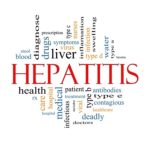Hepatitis C: Why Baby Boomers Should be Tested Immediately
If you were born between 1945 and 1965, you could be one of more than three million baby boomers living with hepatitis C in the U.S. and not even know it. Despite only making up 27% of the U.S. population, baby boomers account for more than 75 percent of hepatitis C cases in the U.S.
What is hepatitis C?
Hepatitis C is a liver infectioncaused by a virus primarily spread through contact with blood from an infected person. While some people only experience a short-term infection, 70-85% of those with hepatitis C develop a chronic infection, according to the Centers for Disease Control and Prevention (CDC), which can lead to liver cirrhosis (or scarring), liver cancer, and even death. Hepatitis C is often referred to as a “silent epidemic,” since a person can have the condition for decades without any symptoms.
Why should boomers, born between 1945 and 1965, be tested today?
Hepatitis C rates peaked in the 1970s and 1980s, when boomers may have been exposed to infected blood before certain safety precautions were adopted for medical procedures, body piercing, and tattoos.
“The CDC estimates boomers are five times more likely to have hepatitis C than the rest of the population. Only 14 percent report having been screened for the virus,” said Dr. Rick Pesano, Vice President of Research & Development at Quest Diagnostics, a leading diagnostics company. “Knowing is the first step, which is why it’s incredibly important for all boomers to speak with their healthcare providers and request to be tested.”
Have YOU been tested?
The only way to know if someone has the virus is through aone-time blood test. Somehow, testing among boomers remains low. Quest Diagnosticshas more than 2,200 Patient Services Centers with labs offering hepatitis C testing for boomers. Quest Diagnostics patient, Robin Roth, was diagnosed with hepatitis C following a routine doctor’s visit and it changed her life.
Though she was symptomless, Robin asked to be screened for hepatitis C and tested positive for the virus. When her doctor explained the virus may have impacted her liver health, Robin asked for a biopsy. The result confirmed she had liver cirrhosis. After receiving treatment for nearly a year, she became virus-free and cleared her cirrhosis.
“Although I had no symptoms, I’m so glad I asked my doctor to be tested for hepatitis C. As it turned out, I already had liver cirrhosis which could have progressed to liver failure if I didn’t receive treatment,” said Robin. “Armed with my story, I’m urging all baby boomers to be tested for it; a simple blood test could save a life.”
Watch Robin’s journey from diagnosis to recovery at KnowAboutHepC.com.
Is there a cure?
Yes, there are new and successful treatments that cancure the virus and prevent liver damage, cirrhosis, and liver disease. The biggest barrier to treatment is diagnosis, given the lack of obvious symptoms. This barrier has been a contributing factor to half of the cases of liver cancer in the U.S. The number increased by 72 percent from 2003 to 2012.
For more information about hepatitis C and to assess your risk factors, visit KnowAboutHepC.com.
Category: Wellness




































